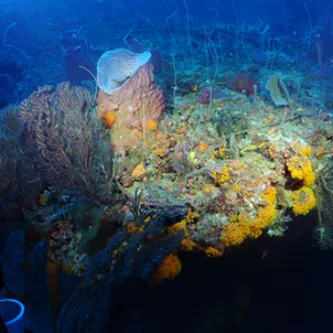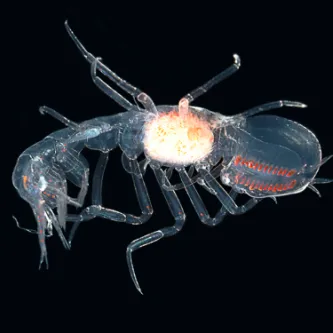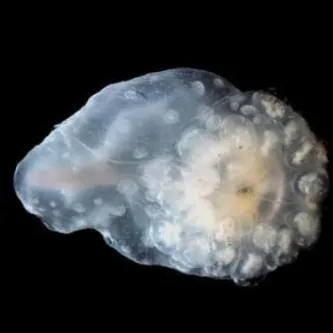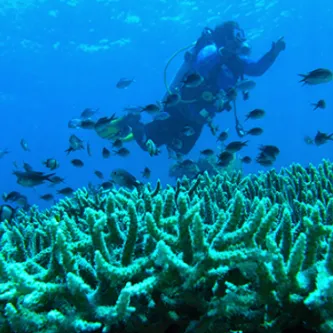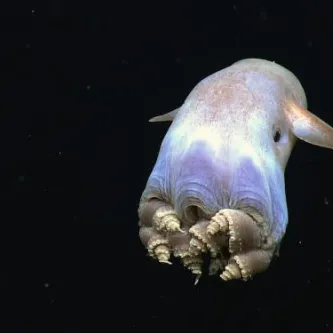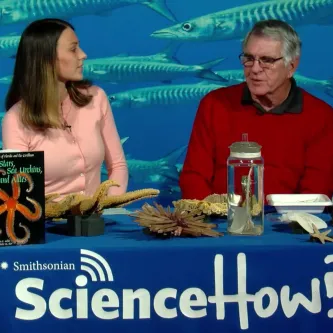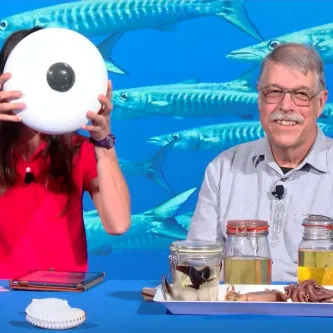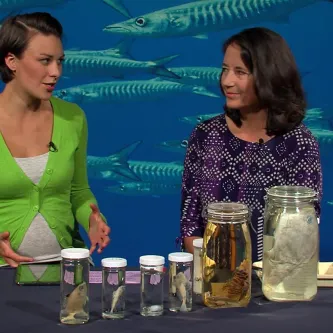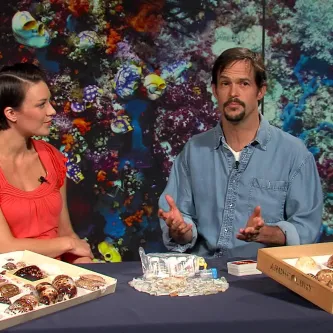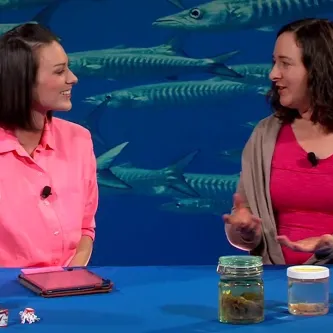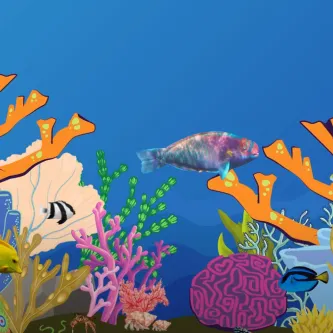Search
Life on Planet Ocean
The Ocean: The Key to Life
The ocean often feels like a great mystery, with strange creatures living in its depths — but it is key to life on this planet. The first signs of life appeared in the ocean some 3.5 billion years ago, and through the ages those initial single-celled organisms evolved into the variety of life we see today, on land as well as in the sea.
Reflecting this history, most of the major branches of this Tree of Life are still found only or mostly in the ocean. And there are certainly plenty of places for marine organisms to live — ocean covers nearly three-quarters of the planet's surface and holds 95 percent of its possible living space.
The Spice of Life
The ocean has some of the earth's deepest valleys, dipping as low as 6.8 miles beneath the water's surface, tallest mountains, including a mountain range that is nearly 50,000 miles long, and flattest plains. The variation in geology and depth in the ocean provides a diversity of habitats, with lots of space for unusual organisms to adapt. At the surface, sunlight reaches into the waves and allows plants and algae to flourish. These plants provide energy to sustain lengthy food chains including hoards of microscopic zooplankton, roving schools of fish, and large predators, such as great white sharks and seabirds.
Invertebrates such as pteropods and squid come to the surface at night to feed on this bounty, but stay hidden in darker water during the day. Their daily vertical migrations up to the surface and back down to the depths brings food (including dead animals and waste) and nutrient-rich water deeper into the sea. The small bits of food, known as marine snow, rain down on the seafloor, feeding the many animals that live in total darkness. Occasionally a much larger food item will sink — such as the carcass of a whale — which will sustain large communities for months on the seafloor. Other deep-sea organisms are fueled by bacteria that get energy from chemicals that spew out from cracks in the seafloor.
Coral reefs can also be found in the deep-sea, where unlike their coastal relations they don’t rely on sunlight for energy and nutrients. Although coral reefs make up less than 1 percent of the ocean floor they provide a home for more than 25 percent of all marine species. Coastal ecosystems, like seagrass beds and mangroves help protect coastlines from strong storms and provide nurseries for juvenile fish.
Dr. Christopher Meyer, a research zoologist at the National Museum of Natural History and director of the Moorea Biocode Project, spends his days exploring and documenting the diversity of the ocean. By placing "coral reef condominiums" on reefs around the world, he collects all the miniscule and often unseen organisms that live there. His work is helping to figure out what lives on reefs, how they function, and predict how they will respond to change. These are big issues to tackle, because in most of the ocean, the more you look, the more life forms you find.
As Curator of Fishes at the National Museum of Natural History, Dr. Carole Baldwin spends her time studying fish diversity—both directly in the water and at the museum. By analyzing the morphology and DNA of museum collections, she and her team discovered that what they thought were three species of fish were actually ten — discovering seven new species of fish. She also works with the Deep Reef Observation Program (DROP), diving deep in the waters of Curaçao in a manned submersible. This program allows researchers to explore areas of the ocean for new species they aren’t able to reach by scuba diving.
A Planetary Resource
Ocean plants provide half of the atmosphere's oxygen that we breathe. It provides the fish and other seafood that many people rely on for food and livelihood, is a source of medicines, and even its waves create energy that we can harness to power our homes. Ocean currents and the heat the ocean stores keep the Earth at the right temperature for life — and generate humbling storms.
Many human cultures from around the world have a deep connection to the ocean, and that continues today as people fish and explore. Forty-four percent of the world population lives within 150 km of the coast and 3 billion people rely on fisheries for 20 percent of their protein. But the ocean faces many threats, including overfishing, warming waters, acidification, and pollution. We have many challenges ahead to conserve the sea's biodiversity, resources, and value to human culture and society, but also many possibilities available right now to meet these challenges.
